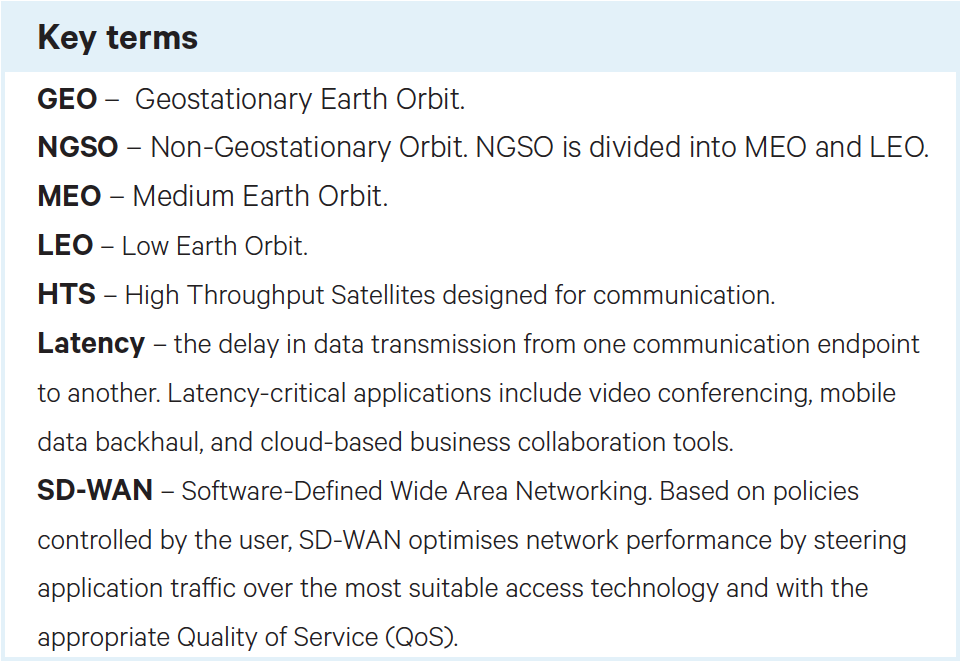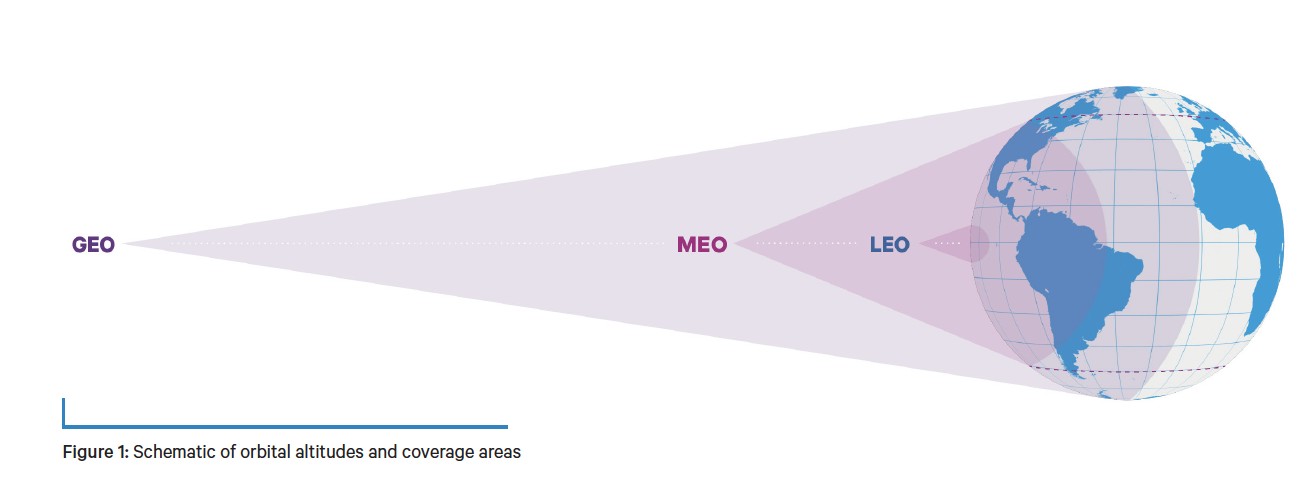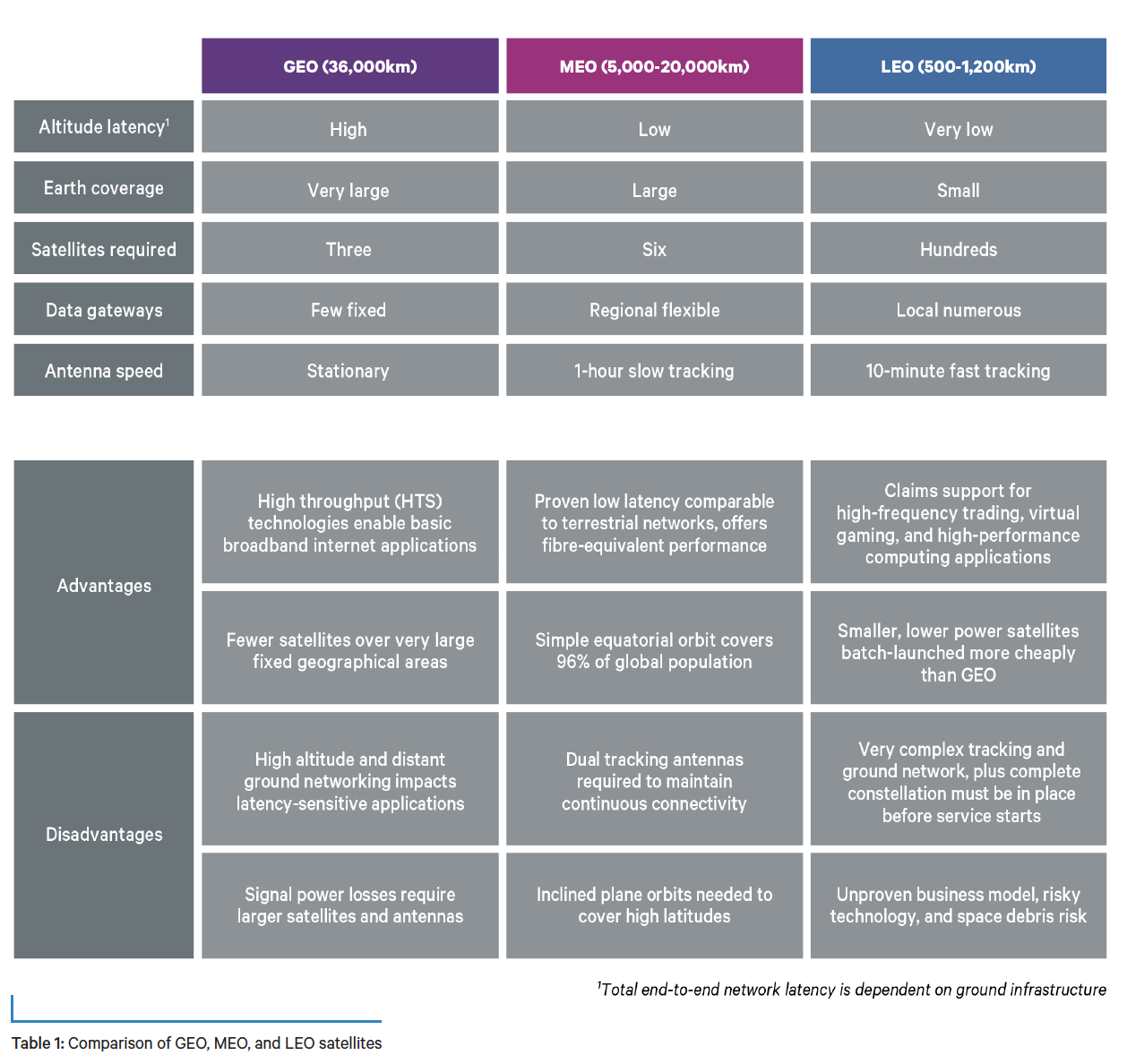GEO, MEO, and LEO
How orbital altitude impacts network performance in satellite data services

COMMUNICATION OVER SATELLITE
is now well accepted as a key enabler across the telecommunications industry. Satellite networks can supplement existing infrastructure by providing global reach where terrestrial networks are unavailable or not feasible.
But not all satellite networks are created equal. Providers offer different solutions depending on the orbits available to them, and so understanding how the distance from Earth affects performance is crucial for decision making when selecting a satellite service. The following pages give an overview of the three main orbit classes, along with some of the principal trade-offs between them.

GEOSTATIONARY EARTH ORBIT
Altitude 36,000km
GEO satellites match the rotation of the Earth as they travel, and so remain above the same point on the ground. Hundreds of GEO satellites are in orbit today, traditionally delivering services such as weather data, broadcast TV, and some low-speed data communication. Over the past few years, GEO has been significantly enhanced by High Throughput Satellites (HTS), which are purpose-built for data.
MEDIUM EARTH ORBIT
Altitude 5,000 to 20,000km
MEO has historically been used for GPS and other navigation applications. More recently, HTS MEO constellations have been deployed to deliver low-latency, high-bandwidth data connectivity to service providers, government agencies, and commercial enterprises.
MEO satellites bring fibre-like performance to remote areas where laying fibre is not viable, such as cruise, commercial maritime, aero, offshore platforms, network backhaul in difficult terrain, and humanitarian relief operations.
LOW EARTH ORBIT
Altitude 500 to 1,200km
LEO is densely populated with thousands of satellites in operation today, primarily addressing science, imaging, and low-bandwidth telecommunications needs. The next generation of HTS LEO satellites intends to serve communication markets such as mass-consumer and enterprise broadband internet.

A HARMONISED MULTI-ORBIT APPROACH
Latency is clearly a major determiner of data performance, and LEO satellites can ostensibly offer low-latency connectivity. However, the limited coverage, complex inter-satellite networking, and elaborate ground infrastructure call into question the possibility of achieving tangible, consistent performance gains with LEO networks.
MEO satellites by contrast are an established and proven solution, already delivering reliable high-bandwidth communication. With the implementation of SD-WAN, data paths can be automatically switched between MEO, GEO, and terrestrial networks to match application needs, provide resilience, or increase coverage. Rather than being limited by a single altitude, this type of adaptive technology empowers telcos, mobile operators, and large organisations to capitalise on the merits of these two tried-and-tested orbit classes.





